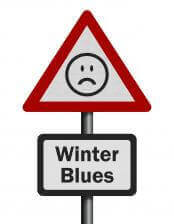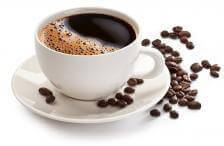How to Beat Winter Blues and Seasonal Affective Disorder (SAD)
When all that’s left of the fa-la-la-la-las is rock-hard fruitcake, the winter blahs creep up, settle in, and hang around until spring. Dr. Ellen Hendriksen, the Savvy Psychologist, has 8 tips on how to deal with the blues and their more serious cousin, Seasonal Affective Disorder.
Listen
How to Beat Winter Blues and Seasonal Affective Disorder (SAD)
We’re in the home stretch of what some have called the worst winter in U.S. history. Trudging to dig out your car yet again, your temper may match the days: short, dark, and icy. This is the exact complaint that one Savvy Pscyhologist listener of Providence, RI emailed me about. Dan H. – we hear you!;
Winter blahs are pretty common. Some folks hate the holidays. Others feel let down once the Christmas tree is out by the curb. Still others get ground down by month after month of gray skies and grayer slush. Even Wall Street isn’t immune: indeed, the price of IPOs has been found to vary with the season.
As we’ve mentioned on the Savvy Psychologist show before, most disorders are the extreme end of normal experiences. Winter blues is a problem, but a relatively minor one—you feel blah, you eat more Girl Scout cookies in the recliner than usual, but you manage to function.
By contrast, Seasonal Affective Disorder, or SAD, is more serious. More often than not, a SAD sufferer feels like a hibernating bear who’s been disturbed: grouchy, lethargic, and exhausted. You also may feel sad, guilty, hopeless, pessimistic, unmotivated, and self-critical. Symptoms that are different from a non-seasonal depression include craving for carbs, resulting in weight gain, and sleeping too much. Also, unlike typical depression, which is equal-opportunity when it comes to the season, SAD lifts like a hemline once warmer weather hits.
SAD affects about 1-5% of Americans in the lower 48, with numbers increasing as we move to northern latitudes, shorter days, and longer winters. In Alaska, numbers can top 10%. Women in their childbearing years are most affected, with a 4:1 ratio of women to men.
What Causes Seasonal Affective Disorder (SAD)?
No one is exactly sure, but the shorter daylight hours of winter seem to be the main cause of SAD. Light is the pacemaker to our pacemaker—it cues our circadian rhythms, or internal body clock. Shortened daylight hours can trigger a cascade of problems: our out-of-whack circadian rhythms throw off associated neurotransmitters and hormones such as serotonin and melatonin, which in turn throws off our appetite, sleep, and mood. Additional factors like climate, genetics, and even the sensitivity of your retinas combine to create the perfect (winter) storm for SAD.
Those carb cravings, by the way, are your body’s attempt to boost serotonin. Serotonin release can be influenced by high-carbohydrate food, as anyone who has ever reached for a donut to soothe a bad mood can attest. Indeed, it’s not just a phenomenon unique to SAD—ask anyone who’s ever tried to quit smoking, had PMS, or battled emotional eating.
So what can you do to beat winter blues and SAD? Well, instead of curling up in a fetal position with a stack of cinnamon rolls until spring, try my 5 tips for beating mild winter blues. And if your struggle is with full-blown SAD, I have 3 tips on how to combat that too.
5 Tips to Beat the Winter Blues
Tip #1: See the light.

To treat winter blues with light, getting some winter sun may be enough. Standing indoors by a closed window or seeing light through a windshield while commuting isn’t sufficient, but a walk around the neighborhood with your dog or a trek to a deliberately distant coffee shop during bright, midday work hours might be a satisfactory, if cold, way to soak in some sunlight.
Tip #2: Exercise.
A long line of studies touts the benefits of exercise on mood. How exercise might work in the context of SAD isn’t exactly clear. Some studies say exercise somehow increases one’s sensitivity to light and can help restore circadian rhythms. Others say it jump-starts the circadian pacemaker—a cluster of neurons in the pineal gland. Regardless, a good workout may help you achieve a good mood, despite an impending Snowpocalypse.

A huge study followed 51,000 American women for 24 years and found, among many other things, that as coffee consumption went up, risk of depression went down. The women who drank the most coffee—4 or more cups a day—had the lowest risk of depression. The researchers were careful to say that the research was too preliminary to start recommending caffeine as depression inoculation, but in the dead of winter, the stimulation (and warmth) of a good latte can’t be a bad thing.
Nutrition Diva agrees. Check out her episodes Is Caffeine Bad for You? and Can Green Coffee Help You Lose Weight? for more on the benefits of coffee.
Tip #4: Wash your hands.
This seems an odd way to improve your mood, but you’re more susceptible to depressive symptoms after a viral illness, and handwashing is the best way to avoid the cold or flu (besides a flu shot, which you should also get).
Tip #5: Socialize.
Social support is one of the best buffers to all kinds of mood problems, but I know, I know – when you have the winter blahs, the last thing you feel like doing is hanging out. If nothing else, throw a Winter Doldrums party, wear your best Snuggie, and make your friends come to you.
See also: Dinner Party Etiquette: How to Be a Good Host
3 Tips to Beat SAD
In addition to all of the above, here are 3 extra, supercharged tips to battle true SAD:

For SAD sufferers, a lightbox is the treatment of choice and works for 80% of patients. One study even showed improvements after just one hour of treatment—near-immediate effect. The consensus is 30 minutes with a high-quality lightbox when you first wake up. While this can be a time suck, it’s 30 minutes well spent. Simply sitting in front of the light will trigger a cascade of changes in your brain and re-set your body clock. Talk to your doctor about a possible prescription.
See also: Technology to Help You Sleep
Tip #2: Negative air ionization.
I admit, I was skeptical about this one at first, but it checks out. A negative ion is an atom or molecule that has gained an electron. Negative air ions are generated naturally by moving water—there’s a higher concentration at waterfalls, the beach, and even in your shower. Germane to our topic, summer air, but not winter air, has a high concentration of negative ions. A study in the prestigious American Journal of Psychiatry found that high-density negative air ionization during sleep led to a 50% improvement in SAD symptoms in about half the participants—not as many as with bright light, but a breakthrough non-drug treatment nonetheless.
One thing worth your skepticism is the resulting avalanche of negative air ionization products out there—bracelets, air purifiers, even lightboxes with negative ionization built in. Unfortunately, most negative air ionizers emit too few ions to do anything for your mood. The generators in the study had a flow rate of 450 trillion per second, much higher than most products on the market. Machines that match the ones used in the study are out there, though; just read the fine print.
Tip #3: Consider traditional depression treatments: medication and therapy.
On the medication front, Wellbutrin, which has a reputation for being energizing, has been approved by the FDA for treating SAD. Talk to your general practitioner or psychiatrist about this option. On the therapy front, cognitive behavioral therapy (CBT) can address the unhelpful beliefs and habits—like withdrawing from a winter social life—that may go along with SAD, and may act as inoculation for future winters. Find a qualified psychologist you like and trust.
So there we have it; 8 tips to beat the winter blahs and the more serious Seasonal Affective Disorder. Snowmageddon will be no match for you.
References
Dolvin, S.D., & Fernhaber, S.A. (2014). Seasonal affective disorder and IPO underpricing: Implications for young firms. Venture Capital, 16, 51-68.
Kurlansik, S.L. & Ibay, A.D. (2012). Seasonal Affective Disorder. American Family Physician, 86, 1037-1041.
Lucas, M., Mirzael, F., Pan, A., Okereke, O.I., Willett, W.C., O’Reilly E.J., et al. (2011). Coffee, caffeine, and risk of depression among women. Archives of Internal Medicine, 171, 1571-8.
Peiser, B. (2009). Seasonal affective disorder and exercise treatment: a review. Biological Rhythm Research, 40, 85-97.
Reeves, G.M., Nijjar, G.V., Langenberg, P., Johnson, M.A., Khabazghazvini, B., Sleemi, A., et al. (2012). Improvement in depression scores after 1 hour of light therapy treatment in patients with seasonal affective disorder. Journal of Nervous and Mental Disease, 200, 51-55.
Roecklein, K., Wong, P., Ernecoff, N., Miller, M., Donofry, S. Kamarck, M., et al. (2013). The post illumination pupil response is reduced in seasonal affective disorder. Psychiatry Research, 210, 150-158.
Terman, M. & Terman, J.S. (2006). Controlled trial of naturalistic dawn simulation and negative air ionization for seasonal affective disorder. American Journal of Psychiatry, 163, 2126-33.
Disclaimer: All content is strictly for informational purposes only. This content does not substitute any medical advice, and does not replace any medical judgment or reasoning by your personal health provider. Please always seek a licensed physician in your area regarding all health related questions.
Woman in winter and winter blues images courtesy of Shutterstock.

